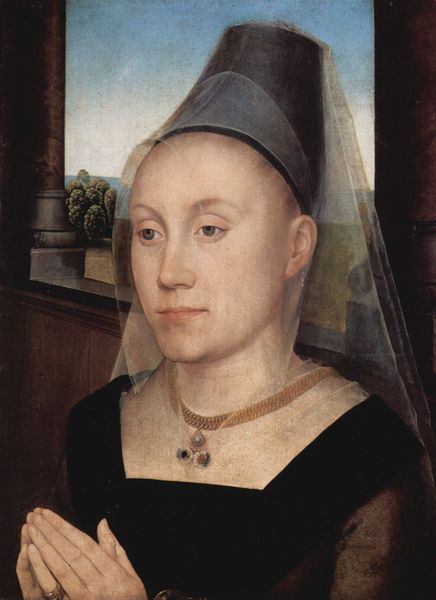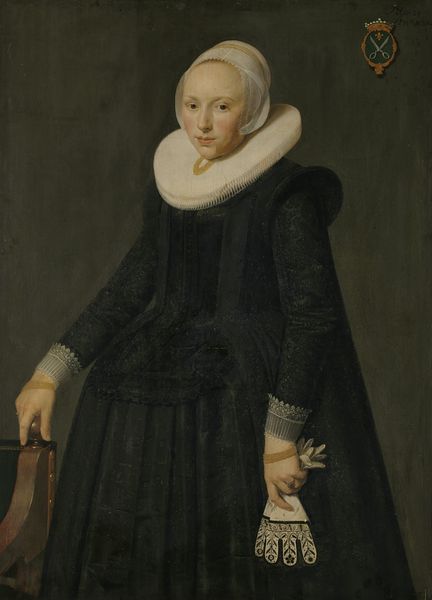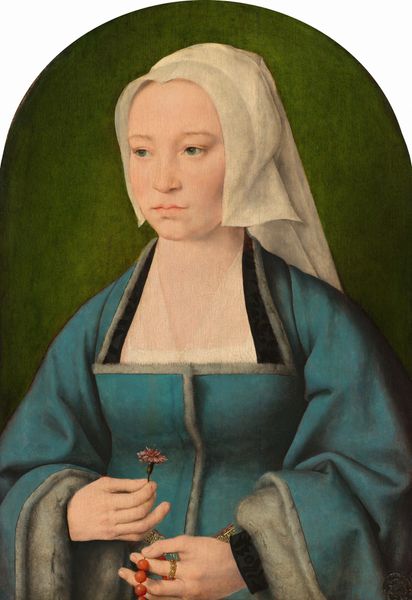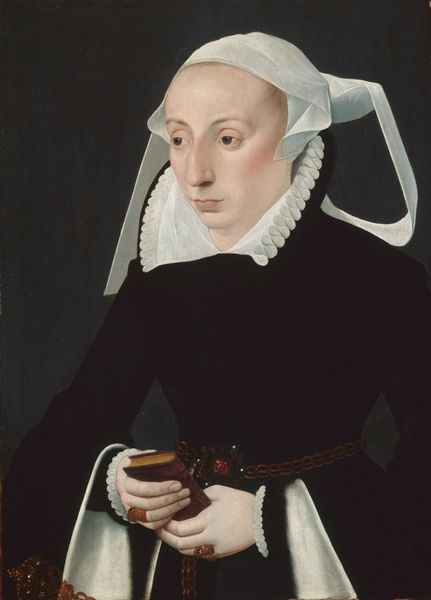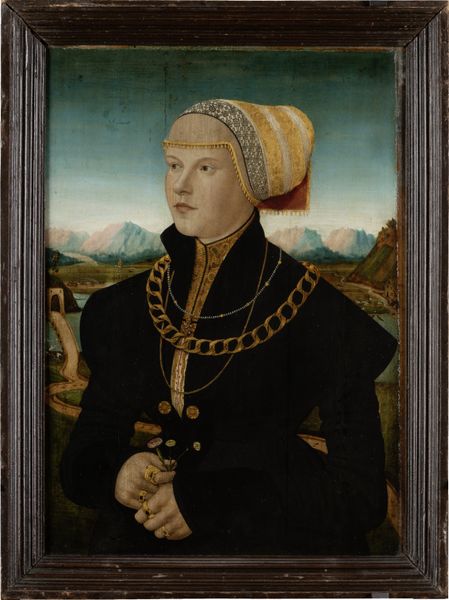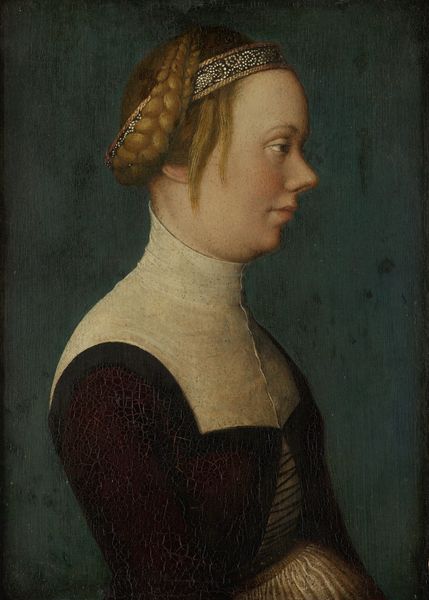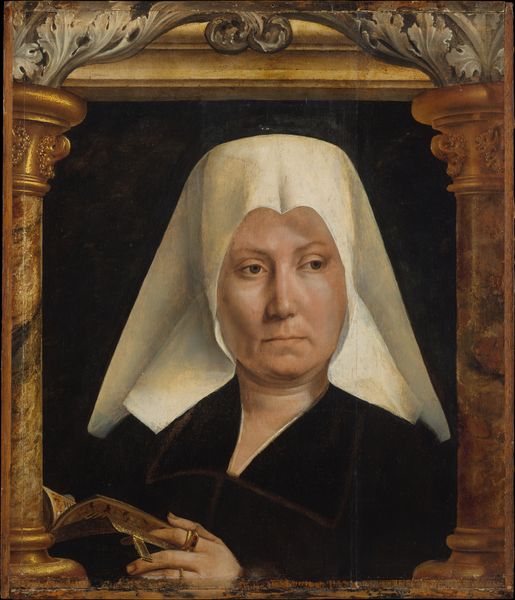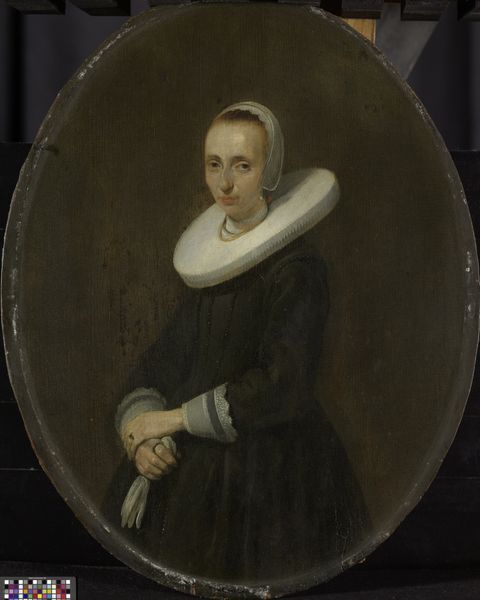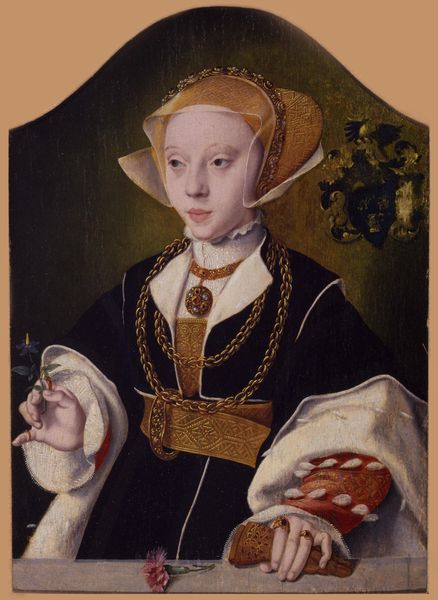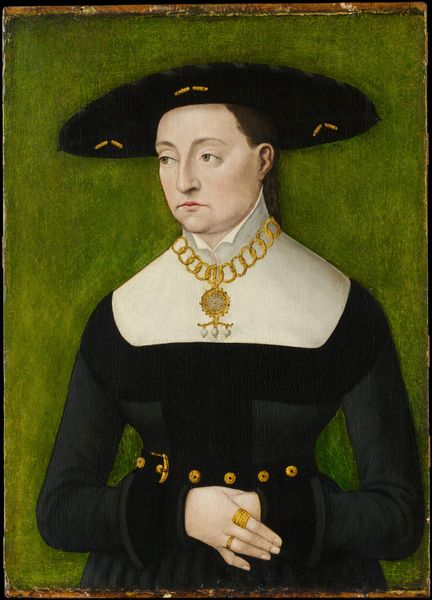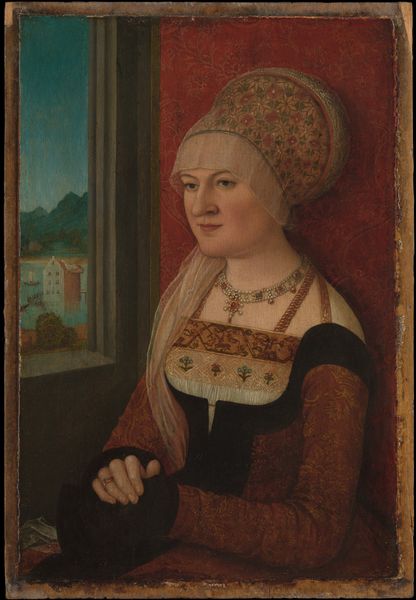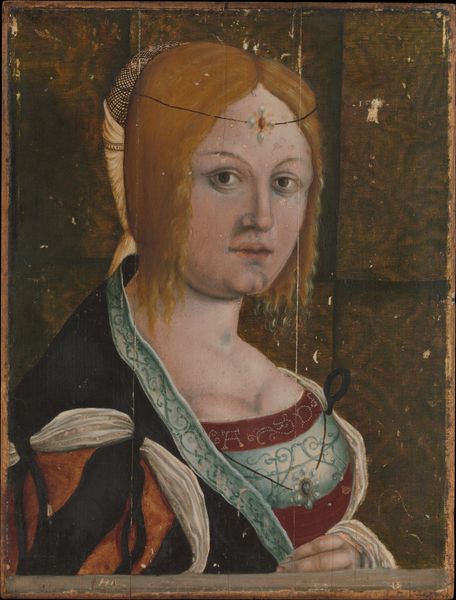
oil-paint
#
portrait
#
oil-paint
#
mannerism
#
oil painting
#
northern-renaissance
Dimensions: height 83 cm, width 25.5 cm, height 94.3 cm, width 33.6 cm, depth 3.5 cm
Copyright: Rijks Museum: Open Domain
This wing of a triptych, with the portrait of Elisabeth Canneel, was painted in the Netherlands by an anonymous artist. Triptychs often served as devotional objects within the private sphere, and portraits of the well-to-do as devotional images were common in the Netherlands at this time. The way that the figure is depicted and the way it is framed gives us clues as to how the institution of art-making and the place of women, particularly wealthy women, worked within the culture. The sober dress and pious demeanor would have signaled her virtue and status within the community. The presence of the rosary beads further emphasizes her religious devotion, a quality highly valued in women of the time. The triptych format itself, intended for private devotion, suggests a culture where personal faith was nurtured within the domestic setting, especially among women. The social history of art reminds us that even the most intimate portraits can reveal broader cultural values and expectations. To understand this work more deeply, we could research the role of women in the 16th-century Netherlands, the customs surrounding religious devotion, and the patronage networks that supported artists like this anonymous painter.
Comments
No comments
Be the first to comment and join the conversation on the ultimate creative platform.
